Saw care
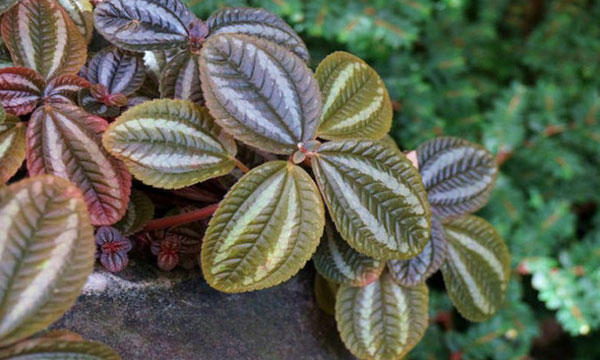
Despite the variety of species and varieties of this plant, the care and conditions of maintenance for all are basically the same.
Content temperature
The pilea plant is thermophilic and the usual room temperature is quite acceptable for it. It is believed that the most acceptable temperature for sawing is within + 20-25 degrees. But for such species as kadieri, peperomia and small-leaved saw, it is desirable to lower the temperature in winter to + 16-18 degrees. This decrease is desirable, but as practice shows, it is not at all necessary if normal air humidity is constantly maintained. Protect the saw from drafts. In the summer, you can safely take it outside, protecting it from the burning sun, wind and rain.
Lighting and location
Try to provide her with a lot of light, protecting her from direct sunlight. Given the high decorative features of the saw, on the windowsill, covered with a curtain, it will look somewhat inappropriate. It is better to place the saw next to the window. I note that it looks most impressive against a dark background, in a composition with bright colors.
Keep in mind. With excessive light, the plant becomes discolored, the leaves become faded, unattractive.
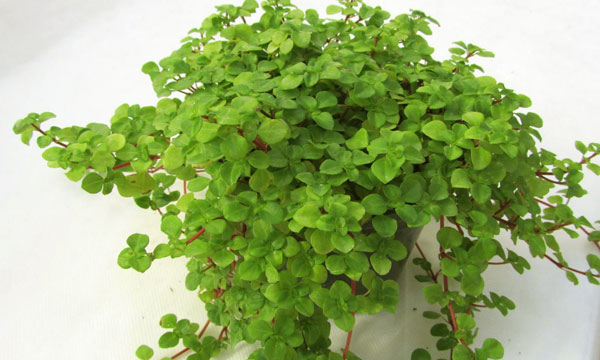
Watering and humidity
In the summer, you should maintain a constant soil moisture. Water immediately after the soil dries slightly. Reduce watering in winter. Water about a day or two after the soil dries. Pilea tolerates dry soil more easily than excess moisture. A flooded plant can rot the roots.
For a comfortable existence, a pilea needs high humidity. But it is not recommended to spray it. This will not affect her health, but from this she will lose her attractiveness, she will look untidy. This is especially true for the pilea varieties with velvety leaves. Water on the leaves can cause them irreparable harm. Most often, problems with humidity occur during the heating season, when the air in the premises is too dry. To maintain the required humidity, you can put a pot with a saw in a tray with water on pebbles, expanded clay, moss. The bottom of the pot should not touch the water. You can place the saw next to the plants you spray regularly. If the saw is grown in a suspended state, then you can use a roomy planter, in which the pot with the plant is placed. The space between the walls of the planter and the pot is filled with damp moss.
Top dressing
Due to the lack of necessary elements, the leaves of the sawtooth become very shallow. From March until late summer, feed her every ten days. Specialized fertilizers are sold for the pilea, but it is permissible to use the universal “For indoor plants” as well. With the onset of autumn and until spring, feeding is gradually reduced, but I do not advise you to completely stop them. Reduce them to once a month.
Pilea transplant
It is usually recommended to replant an adult flower every two or three years. But we advise you to do it every spring. The roots of the pilea are located close to the surface of the ground, therefore, the pot needs a shallow, wide one. You will be convinced of this already at the first transplant of the saw, and in the future you will be able to select a suitable pot. You can buy ready-made land for sawing, the choice is sufficient. For those who want to compose the land for the saw themselves, we recommend a fairly simple and popular composition.
- Leafy ground - three parts
- Humus - one part
- Peat - one piece
- Sand - one piece
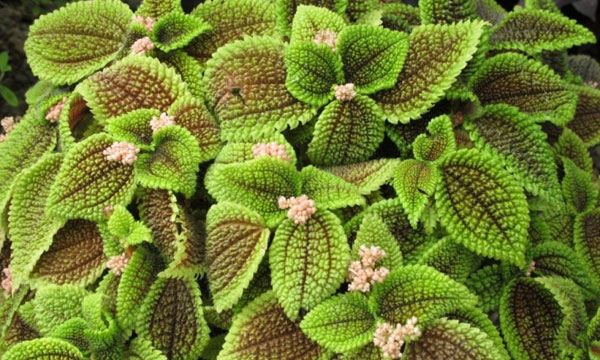
Pruning saws
You may have noticed that in some community organizations, where the plants are looked after as necessary, the saws are a tangle of twigs and leaves. Often with long, half-naked lashes
The pylaea grows very quickly. Trimming the sawtooth, pinching the tops of the lashes, should become regular. The saw is easy to cut.
Reproduction of the pilea
Cuttings that remain in the process of pruning can simply be put in water, and soon they will have their own roots, after which young saws can be planted in pots with soil. It's that simple. Moreover, the saw can be propagated throughout the year. For the most decorative effect, plant several cuttings in one pot.
1 Main types
Caring for a saw at home is not difficult. It all depends only on the type of plant and its adaptability to the environment.
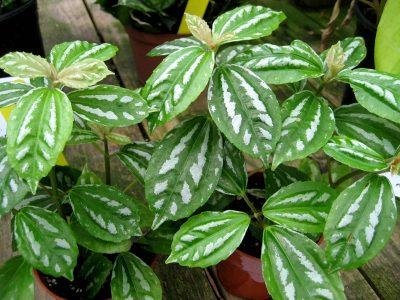
The types of flower are very diverse:
- 1. Thick-leaved. The most popular type. The leaves are red-green, have a raised tuberosity and rather light stripes along the edges, which resemble real velvet, powdered with an almost transparent invisible dust.
- 2. Saw Spruce. In appearance, it strongly resembles some kind of strange reptile. It grows to a height of 20 cm. Frosted leaves in the form of folds strongly distinguish it from other species. Their color is brownish-red. There are small notches along the edges. The texture of the plant becomes especially expressive due to the presence of blister-like outgrowths on it.
- 3. Wrapped. This species also has blistery projections that appear on the leaves. Bushes reach a height of no more than 30 cm, have a copper, red or bronze-green tint. Their stems are quite even, oval-shaped leaves are no more than 7 cm. Through them, you can see dark brown veins, creating a lively pattern on the surface.
- 4. Kadier. This type of plant, due to external data, is the strictest flower. The leaves of the Kadje pilea are quite large, long and 10 cm in length. As for their width, it can reach more than 4 cm. Adult leaves bend beautifully, which gives the plant an amazing look. Bushes are small, reaching 30-40 cm in height. Shoots are thin and flexible enough.
- 5. Peperomiform. A miniature indoor bush that will appeal to every florist. It is difficult to notice the flowering of a plant, and it happens in indoor conditions quite rarely. The stems have a brownish-green tint, small bunches of coin-shaped leaves are formed on them. Although the cuttings are long, they are quite thin.
- 6. Small-leaved. Reclining, somewhat drooping shoots are everywhere covered with small leaves, which cannot but attract the attention of others. They look rather curly due to their tiny fleshy leaves. Small-leaved Pilea has a light bright color.
- 7. Coin-leaved. A ground cover plant, which, unlike the small-leaved species, has beautiful round-shaped leaves that look like coins. Their color is very delicate, whitish-green. The plant lends itself well to grafting, thanks to which you can create a charming cascade or get a solid rug as a gift.
- 8. Lebanese. Drooping shoots with the presence of small leaves, moreover, not located everywhere, remind of the jungle in miniature. The main decoration of this type of pili are rounded silvery leaves.
- 9. Pressed. The view is rightfully considered the most spectacular. The shoots of the plant are somewhat drooping, and the bushes themselves seem to be flattened and curly. This gives the plant the appearance of a great creeping rug.
- 10. Creeping. Quite small bushes growing in indoor pots are only 25 cm tall. On the creeping shoots, beautiful glossy round leaves are located, reaching no more than 2.5 cm.There is also a copper "fluff" on them, which gives the plant elegance and beauty.
Today, it is the hybrid Pilea that is very popular. This perennial plant reaches a height of 30 cm, and the oval opposite foliage is 7 cm. The tips of the leaves are very pointed.
Description
The homeland of the flower is the subtropical and tropical countries of America. The pilea plant prefers moist, shaded areas. Under ideal conditions, the crop can grow up to 70 cm.

Small pilea flowers
The indoor small-leaved saw is a perennial up to 15 cm high with highly branching shoots, on which small leaves of a pale green hue grow. The maximum size of a sheet plate is 5 mm in length. It is shiny, semicircular in shape, convex at the top, with a solid or carved edge.
The plant blooms rarely in apartment conditions. Small light-colored pilea buds, collected in inflorescences, usually appear in early summer and have no decorative value. Many of them are cut so as not to weaken the plant during the flowering period.
Advice! The dense creeping shoots of the flower are suitable for cascading room decoration. Pilea looks beautiful next to plants with erect stems.
Flower types
Common types of pylaea that can be grown at home:
- Peperomium (Chinese money tree). The height of the flower is up to 40 cm. From the main stem, rounded concave leaves hang on elongated petioles, which makes them look like umbrellas.
- Silver (other names - Silver, Kadier). New shoots look up, and old ones creep along the ground. The leaves are elongated, with carved edges, with 3 veins, along which silvery threads stand out. Thanks to them, this species got its name. The maximum flower height is 40 cm.
- Filiform. A plant with thin, curly reddish shoots. The leaves are small, oval, purple below.
- Wrapped. At each node of its stem, there are 2 leaves with carved edges. The sheet plate is corrugated with brown veins. The flower grows up to 30 cm.
- Coin-leaved. Shoots are creeping, with rounded, bright green, coin-like leaves. They are located on small petioles. The lower part of the leaf plate is colored red.
- Lebanese. This is an ampelous saw with brown curly shoots. Small oval leaves on top have a pale green color, as if covered with silver, and below the plate is rich green.

Lebanese pilea
The pilea flower increases the humidity level in the room. Some species are able to secrete biologically active substances that stop the growth of bacteria, fungi and other protozoa.
How to care for Pellionia at home
Lighting
Pellionia does not require a lot of light. This flower belongs rather to shade-loving plants and too bright lighting, and especially direct sunlight, can negatively affect the decorativeness of Pellionia. At the same time, it should not be placed in the darkest corner of the room. Penumbra is the most optimal place to grow this plant.
Temperature
Despite its tropical origin, Pellionia prefers moderate temperatures at home. In the warm season, the optimum temperature will be within + 20-25 degrees, during the period of relative winter dormancy + 16-18. Pellionia is very painful in drafts, but requires a regular supply of fresh air.
Watering
Pellionia requires regular and abundant watering in spring and summer, when the plant is actively developing. In winter, watering the plant will depend on the temperature of the content.
During this period, it is important not to overdo it and not flood the plant. Excess moisture in combination with a low temperature can cause rotting of the roots and death of Pellionia
Regardless of the season and air temperature, avoid watering with cold water. Its temperature should be several degrees higher than the air temperature.
Air humidity
Like all tropical plants, Pellionia is demanding on air humidity, dry air is destructive for it. You can limit yourself only to spraying Pellionia, but in this case they should be not just regular, but frequent, twice a day. Therefore, in combination with spraying, it is preferable to use other methods of air humidification.
Top dressing
In spring - summer, Pellionia can and should be fed with full mineral fertilizer. Two dressings per month will be enough. But there is a danger and overfeeding the plant. To avoid this, the concentration of the solution should be reduced by half of the concentration recommended on the package.
Planting and transplanting
Pellionia is a short-lived flower. Unfortunately, it retains its decorative effect for a maximum of two years. Therefore, there will be no need for regular transfers. But given the ease of reproduction of Pellionia, you can always grow a new plant. Wide and shallow pots are preferred for planting Pellionia. This is due to the superficial location of the plant roots. The soil for planting Pellionia should be light and loose. Even ready-made potting mix is recommended to be lightened by adding perlite. To make such a mixture on your own, you need to add one part of peat, humus (greenhouse) soil and perlite to two parts of the leaf land. To minimize the danger of flooding the plant and remove excess moisture, it is imperative to create good drainage. The drainage layer should be at least one third of the height of the pot.
Reproduction of Pellionia
The easiest and easiest way to propagate Pellionia is by cuttings. This method is suitable for reproduction of most ampelous indoor plants: zebrins, ivy, hoya, tradescantia, peperomia and others. An apical stalk with two to three internodes should be cut from the mother plant and simply put in a glass of water. This is the most preferred method, although you can plant the cutting directly in a container with light earth. The roots on the handle appear quite quickly. When the roots reach a size of 0.5 cm, young Pellionia can be planted in the ground.
Difficulties in growing Pellionia
- The appearance of pests. Pellionia is mainly affected by aphids and whiteflies. Most often, their appearance is a consequence of dry air combined with high air temperatures. Subject to the rules of caring for Pellionia, the likelihood of their appearance is negligible.
- The tips of the leaves dry out in Pellionia. The reason for this is the same dry air.
- Leaves become pale, fade. This indicates that your Pellionia is in a place that is too bright.
- The stems of the plant are elongated, become thinner. Here, on the contrary, there is a lack of light.
- The root collar begins to rot. The consequence of excessive watering. In this case, there is a high probability that the plant can no longer be saved. It is best to take a stalk from him as soon as possible and start growing a new Pellionia, taking into account past mistakes.
Home care
Caring for the saw is straightforward. The flower needs diffused lighting. Direct sunlight can cause leaf burns. Plant pots should be placed in shade or partial shade on west or east windows.
Temperature
The plant does not tolerate heat well. The optimum temperature for growing is + 25 ° C. In winter, the pots are moved to a cool room with a temperature of + 16 ... + 18 ° C.
Humidity
Under natural conditions, the sawe grows in the lower tiers of the tropical rainforest, so it needs high humidity. It is recommended to humidify the air around the plant with a fine spray bottle, avoiding contact with the leaves.To increase the moisture level, you can place flower pots on pallets with moistened pebbles, expanded clay or moss.
Watering
Watering should be moderate, but excess water should be immediately drained from the pan to avoid root rot. The soil between wetting the soil should dry out on the surface. For irrigation, use soft, settled water.
Top dressing
Fertilization is carried out in spring and summer, when the plant is actively increasing its green mass. For feeding, it is recommended to use a complex fertilizer for ornamental deciduous plants, which is applied once every 30 days, reducing the dosage indicated in the instructions by half.
Pruning
Pylaea is characterized by the rapid growth of shoots, while the stems become bare and lose their attractiveness. To maintain their decorative appearance, they are systematically cut off. In addition, pruning stimulates the growth of young shoots and helps to form a compact bush. Once every 3-4 years, an adult plant is rejuvenated. To do this, the shoots are cut and rooted, and the old plant is destroyed.
Landing
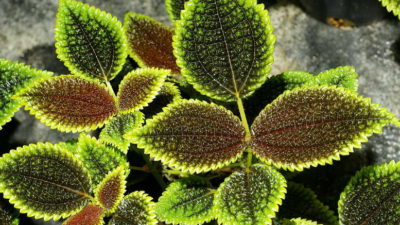
A drainage layer is placed on the bottom of the container. Expanded clay, small pebbles, broken brick can be used as drainage.
The soil should be slightly acidic or neutral. Ready-made universal soil is suitable for planting. The soil mixture can be prepared independently from equal parts of sod land, humus, peat and coarse sand.
Transplantation of adult plants is carried out in early spring once every 2-3 years.
Reproduction
Usually, the sawtooth is propagated by seed or cuttings.
Seeds
It is almost impossible to get seeds at home, and the seed offered by the shops has a low germination rate.
Sowing of seeds is carried out in low containers filled with a nutrient mixture of peat and sand. They are buried 0.5 cm, then the containers are covered with glass or plastic wrap and placed in a warm, bright room. Containers are periodically opened to ventilate and moisten the soil.
The first shoots appear in 20 - 25 days. The seedlings are thinned out, and after the appearance of a pair of real leaves, they are seated in separate pots
It is very important to maintain a high level of humidity so that young plants do not die.
Cuttings
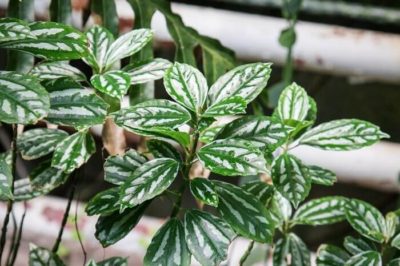
In this case, the length of the cutting should be at least 8 cm and have up to four pairs of leaves.
Shoots are rooted in water. After the roots appear, they are planted in soil containing a large amount of sand.
From above, the seedlings are covered with a jar or plastic bottle and periodically opened for airing.
After rooting, the flower begins to sprout, it is opened and kept without shelter.
Growing problems
The saw is resistant to disease and pest infestation. However, with improper care, flower growers may face some difficulties:
drying of the tips of the leaves - caused by high or low temperatures or insufficient air humidity; wrinkling of leaves - insufficient watering, too bright lighting; decay of stems - excess moisture in the soil; the appearance of dark spots on the leaves - the use of hard water for irrigation, lack of light. To return the pylaea to an attractive appearance, it is necessary to change the location of the flower, adjust the watering regime, increase the number of sprays, then the flower will become a real decoration of the house.


